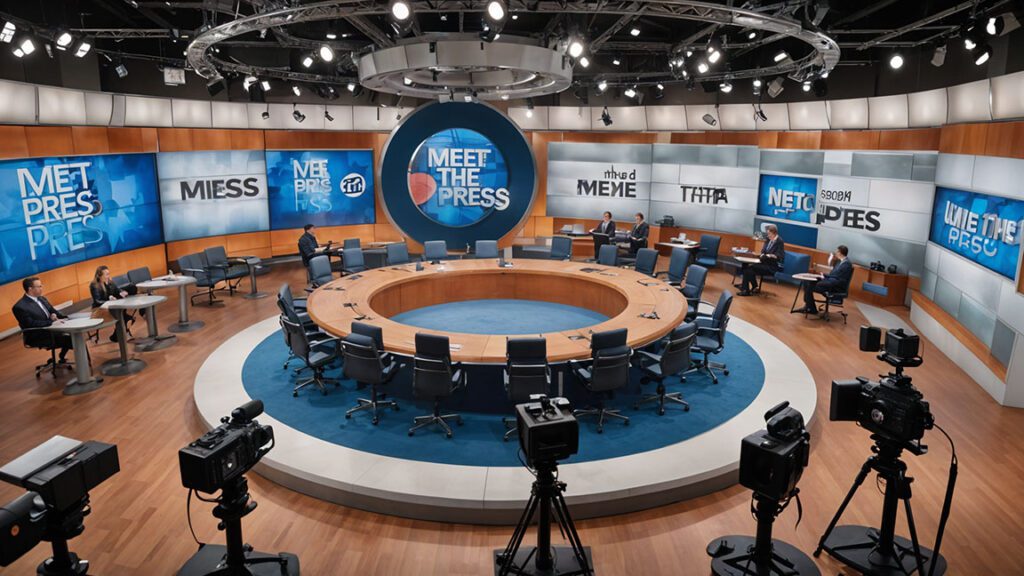Introduction
The “Smoothstack Lawsuit” has emerged as a pivotal event in the tech industry, drawing significant attention and igniting intense discussions due to allegations of discrepancies in the company’s employment practices and business operations. This landmark case not only highlights potential changes in industry norms but also invites scrutiny into the circumstances leading to the lawsuit, emphasizing the complexities of business operations in today’s corporate landscape. Unlike many previous legal challenges faced by tech companies, the Smoothstack Lawsuit stands out for its implications on employment practices, making it essential for industry insiders, potential employees, and observers to understand its details and ramifications. This article will delve into the lawsuit’s background, its far-reaching impact, and the precedents it may set for other firms, reflecting broader issues concerning employee rights, ethical business practices, and corporate accountability. Ultimately, the Smoothstack Lawsuit is more than a legal battle; it serves as a lens through which we can examine the challenges confronting companies like Smoothstack and the future landscape of the tech industry.
| Category | Details |
|---|---|
| Company | Smoothstack |
| Founded | 2018 |
| Industry | IT Staffing and Training |
| Lawsuit Initiation Date | Early 2023 |
| Plaintiffs | Former trainees and employees |
| Key Allegations | Unfair labor practices, breach of contract, misrepresentation |
| Initial Complaints Filed | Various jurisdictions |
| Court Hearings | Multiple hearings, preliminary decisions favoring plaintiffs |
| Financial Impact | Significant legal fees, potential settlement costs, investor uncertainty |
| Reputation Impact | Negative publicity, loss of customer trust |
| Employee Reactions | Concerns about job security and company future |
| Customer Reactions | Mixed feedback, some support plaintiffs’ claims, others defend Smoothstack |
| Official Statements | Smoothstack denies allegations, commits to ethical practices |
| Measures Taken | Revised training programs, improved transparency, enhanced compliance |
| Legal Experts’ View | Complex case, potential for prolonged litigation |
| Industry Analysts’ View | Case could set precedent, lead to changes in tech industry practices |
| Possible Outcomes | Settlement, full trial verdict, financial penalties, regulatory scrutiny |
| Social Media Sentiment | Mix of shock, disappointment, cautious optimism |
| Media Coverage | Extensive, shaping public perception |
| Potential Industry Impact | Regulatory changes, business practice reforms, industry-wide effects |
Background of Smoothstack
Company History
Smoothstack has built its reputation as a pioneer in the tech training and staffing industry, aiming to bridge the skills gap between aspiring tech professionals and the demands of modern companies. Founded several years ago, Smoothstack positioned itself as a company that nurtures talent, offering intensive training programs to equip individuals with the necessary skills to thrive in the tech sector. Over time, it established a presence in the market, gaining recognition for its ability to produce skilled tech workers ready for immediate employment.
However, the company’s history isn’t just about growth and success. Alongside its achievements, there have been murmurs and concerns regarding how it operates, especially in terms of employee treatment and contract agreements. This contrast between its mission to empower tech talent and the controversies surrounding its practices has made Smoothstack’s journey more complex. These underlying issues eventually set the stage for the Smoothstack Lawsuit, which would later bring the company’s operational methods under scrutiny.
As we explore the lawsuit’s background, it’s essential to consider how Smoothstack’s history contributed to the situation. Understanding the company’s origins and growth can provide valuable context for why the lawsuit emerged and why it has captured such intense public interest. The Smoothstack Lawsuit isn’t just an isolated incident; it’s deeply tied to the company’s developmental path and its interactions with employees over the years.
Business Model and Operations
Smoothstack operates on a business model that revolves around training and placing tech professionals in partner organizations. Their approach includes recruiting individuals who show promise, subjecting them to rigorous training, and then offering their services to client companies looking for skilled tech talent. This model seemed like a win-win for all parties involved, providing trainees with job opportunities and clients with prepared professionals ready to integrate into their teams.
However, cracks began to appear in this model as reports emerged about the contractual obligations placed on trainees. Many claimed that Smoothstack required them to sign lengthy contracts with restrictive terms, often binding them to the company for extended periods or imposing financial penalties if they chose to leave early. This business practice became one of the central issues in the Smoothstack Lawsuit, as it raised questions about the fairness and legality of such agreements, particularly for individuals just starting their tech careers.
The company’s operational methods have sparked debates about the ethics of training contracts, with critics arguing that they exploit inexperienced professionals who feel they have no other options. The Smoothstack Lawsuit has brought these concerns to the forefront, challenging whether such business practices align with industry standards and expectations. As we proceed, these operational details will become even more significant in understanding the lawsuit’s impact on the tech training industry.
Read More about Ancient Artz: From Mesopotamia to Modern Inspiration
Details of the Lawsuit
Initiation of the Lawsuit
The Smoothstack Lawsuit was initiated when a group of former employees decided to challenge the company’s employment practices. These individuals claimed that they were subjected to unfair treatment, exploitative contracts, and misleading promises about job opportunities. It was this group’s determination to seek justice that set the legal proceedings in motion, marking the beginning of a case that would soon capture national attention.
The lawsuit alleges that Smoothstack’s contracts were overly restrictive, often placing employees in a position where they felt trapped or unable to pursue other job opportunities. According to the plaintiffs, they were often promised lucrative career paths, only to be met with binding agreements that limited their freedom and financial growth. This discrepancy between expectations and reality became a cornerstone of the Smoothstack Lawsuit, fueling the plaintiffs’ resolve to expose what they believed were unethical practices.
As more details emerged, it became evident that this wasn’t an isolated incident but rather a pattern of behavior affecting multiple employees. The initiation of the Smoothstack Lawsuit represents a turning point where individuals felt empowered to stand against a system they perceived as unjust. It also reflects broader concerns about employment practices in the tech industry, where similar issues have surfaced in recent years.
Allegations Against Smoothstack
The allegations against Smoothstack are serious and multifaceted, painting a picture of a company that may have engaged in practices that violate both legal and ethical standards. One of the most significant allegations is that Smoothstack enforced contracts with punitive clauses, making it difficult for employees to leave the company without facing severe financial consequences. These restrictive terms allegedly created an environment where employees felt trapped, unable to pursue other job opportunities or negotiate better working conditions.
Another key allegation centers around misleading promises made during the recruitment process. Many plaintiffs claimed that they were assured of high-paying job placements and significant career growth, only to find themselves in positions that offered lower compensation than expected or required them to repay training costs if they left before a specified period. This discrepancy between expectations and reality has become a focal point in the Smoothstack Lawsuit, raising questions about the company’s transparency and recruitment ethics.
Furthermore, the lawsuit alleges that Smoothstack’s business model may have relied on practices that took advantage of inexperienced professionals desperate for a foothold in the tech industry. By capitalizing on their aspirations, the company allegedly bound them to contracts that served more to benefit Smoothstack’s operations than to provide genuine career advancement. These allegations, if proven true, could have far-reaching implications for the company and set a precedent for how similar firms operate.
Key Parties Involved
The Smoothstack Lawsuit involves several key parties, each playing a crucial role in the legal battle. The primary plaintiffs are former employees who have come forward with their grievances, representing a diverse group of individuals who underwent Smoothstack’s training programs and subsequently faced challenges related to their contracts. These individuals serve as the driving force behind the lawsuit, providing firsthand accounts of their experiences with the company.
Smoothstack, as the defendant, is represented by a legal team tasked with defending the company’s practices and business model. The company’s leadership and executives have also been drawn into the spotlight, as their decisions and policies are scrutinized in court. They are responsible for addressing the allegations and demonstrating that their operations comply with legal and ethical standards, which will be a significant challenge given the weight of the claims made against them.
In addition to the primary parties, legal experts, industry analysts, and regulatory bodies have taken an interest in the Smoothstack Lawsuit, recognizing its potential to set a precedent for the tech training and staffing sector. Their involvement underscores the lawsuit’s importance and the broader implications it may have for employment practices within the industry. The participation of these stakeholders ensures that the Smoothstack Lawsuit will be a closely watched case with consequences that extend beyond the immediate parties involved.
Legal Proceedings
Timeline of Events
The legal proceedings of the Smoothstack Lawsuit have unfolded in a series of events that shed light on the complexity of the case. It began when former employees filed their grievances, leading to the formal initiation of the lawsuit. This phase involved gathering evidence, interviewing witnesses, and preparing legal documentation to substantiate the claims against Smoothstack. Over time, the case progressed through multiple stages, with both parties presenting their arguments in court. This back-and-forth between the plaintiffs and the defense laid the groundwork for a lengthy legal battle, marked by intense scrutiny of Smoothstack’s practices.
As the case developed, the timeline included various hearings, temporary injunctions, and procedural delays, which is typical in lawsuits of this nature. Each hearing brought new revelations, adding more weight to the allegations against the company. Legal experts have been closely monitoring the timeline, as it provides valuable insights into how Smoothstack operated and how it responded to the accusations. This extended legal process has not only affected the company’s reputation but also caused financial strain due to legal fees and lost business opportunities.
The timeline of events in the Smoothstack Lawsuit highlights the challenges faced by both parties in navigating a complex legal system. It also serves as a reminder of how intricate and drawn-out legal battles can become, especially when dealing with allegations involving contractual obligations and employment practices. This protracted timeline has kept industry observers, employees, and clients on edge, waiting for a resolution that could take months or even years to unfold fully.
Court Hearings and Decisions
The court hearings in the Smoothstack Lawsuit have been pivotal in shaping the public’s understanding of the case. During these hearings, both sides presented their arguments, evidence, and witness testimonies, shedding light on the inner workings of Smoothstack’s business model and its impact on employees. The plaintiffs’ testimonies revealed their experiences, including alleged misrepresentations during recruitment and restrictive employment contracts, which became the crux of the legal battle. These revelations painted a picture of a company that potentially exploited its employees, stirring public concern and media attention.
In response, Smoothstack’s legal team attempted to counter these claims by emphasizing the benefits of their training programs and the opportunities provided to employees. They argued that the contracts were standard industry practices designed to protect the company’s investments in training. However, despite these defenses, the court’s interim decisions have leaned towards further investigation, suggesting that the allegations had enough merit to warrant deeper scrutiny. This has intensified the pressure on Smoothstack to justify its actions and prove its adherence to legal standards.
The decisions made during these court hearings have yet to culminate in a final verdict, but they have set the stage for potential regulatory implications. These proceedings have highlighted the broader issue of employee rights within tech training companies, raising questions about the balance between corporate interests and fair treatment. The outcomes of these hearings could lead to significant changes in how such companies operate, making the Smoothstack Lawsuit a case with far-reaching implications.
Current Status of the Lawsuit
As of now, the Smoothstack Lawsuit remains an ongoing legal battle, with both sides actively engaged in building their cases. The current status involves continued court hearings, document reviews, and negotiations between the parties involved. While no final judgment has been reached, the case has entered a critical phase where each side’s arguments and evidence are being meticulously examined. This stage is often the most challenging, as it requires substantial legal expertise, strategic planning, and the ability to navigate complex legal frameworks.
The ongoing nature of the lawsuit has kept stakeholders, including employees, clients, and industry analysts, on high alert. Many are closely watching the proceedings to understand the potential outcomes and how they might impact the tech industry at large. Smoothstack, on its part, continues to maintain that it has operated within the bounds of the law, despite the mounting evidence and testimonies against it. This defensive stance has made the lawsuit even more contentious, with both parties unwilling to back down.
Given the complexity and scale of the allegations, it’s unlikely that the lawsuit will reach a swift conclusion. The current status suggests that there will be more twists and turns in the coming months, as new evidence emerges and legal arguments evolve. The Smoothstack Lawsuit’s outcome will undoubtedly set a precedent for similar cases in the industry, making it a landmark legal battle that could redefine employment practices within tech training companies.
Impact on Smoothstack
Financial Consequences
The Smoothstack Lawsuit has brought about significant financial consequences for the company. As legal fees continue to accumulate, Smoothstack faces substantial costs associated with defending itself against the allegations. This financial burden is further compounded by the potential settlements or fines that may be imposed if the company is found guilty of the claims. These expenses have already started to impact the company’s profitability, causing concerns among investors and stakeholders about Smoothstack’s financial stability in the long term.
In addition to the direct legal costs, the lawsuit has also affected Smoothstack’s revenue streams. Many clients have chosen to distance themselves from the company due to the negative publicity, resulting in lost contracts and reduced business opportunities. This downturn has not only affected Smoothstack’s bottom line but also raised questions about its ability to sustain operations in the face of such financial challenges. The uncertainty surrounding the lawsuit has made it difficult for Smoothstack to attract new clients, further exacerbating its financial woes.
The long-term financial impact of the lawsuit could be even more severe if the company is forced to change its business model or pay out significant damages. Investors are watching closely, as the outcome of the Smoothstack Lawsuit could determine the company’s financial future. The financial strain imposed by the legal battle serves as a reminder of how costly legal disputes can be for businesses, particularly when allegations of unethical practices come to light.
Reputation and Brand Image
One of the most significant impacts of the Smoothstack Lawsuit has been on the company’s reputation and brand image. Smoothstack, once known for its innovative approach to training tech professionals, now faces criticism and skepticism from the public, industry peers, and potential clients. The allegations of exploitative contracts and misleading promises have damaged the company’s credibility, making it difficult to maintain its standing as a reputable player in the tech staffing industry.
This reputational damage extends beyond just public perception. Clients and partners who once trusted Smoothstack are reconsidering their association with the company, fearing that continued involvement could tarnish their own reputations. As news of the lawsuit spread, industry forums, blogs, and social media platforms became flooded with negative comments and discussions about Smoothstack’s practices, further amplifying the damage to its brand image. This loss of trust is one of the most challenging aspects to recover from, even after legal proceedings conclude.
Rebuilding a tarnished reputation is a long and arduous process, and Smoothstack will need to demonstrate genuine efforts to rectify the issues raised in the lawsuit. This includes implementing transparent business practices, addressing employee concerns, and engaging in open communication with stakeholders. However, given the severity of the allegations, it may take years for Smoothstack to fully regain the trust of the industry and rebuild its brand image.
Employee and Customer Reactions
The Smoothstack Lawsuit has elicited strong reactions from both current and former employees, as well as customers. Many employees have expressed feelings of vindication, seeing the lawsuit as a validation of their concerns regarding the company’s employment practices. Some have even taken to social media and online forums to share their experiences, adding weight to the allegations and further damaging Smoothstack’s reputation. This outpouring of support for the lawsuit has made it clear that internal dissatisfaction was a driving factor behind the legal action.
On the customer front, reactions have been mixed. While some clients have chosen to sever ties with Smoothstack, others remain hopeful that the company will address the issues and emerge stronger from the experience. However, the uncertainty created by the lawsuit has undoubtedly shaken customer confidence, making it more challenging for Smoothstack to maintain its client base. Potential customers are also wary of engaging with the company, given the negative publicity surrounding the lawsuit.
For Smoothstack to move forward, it will need to address the concerns raised by both employees and customers. This may involve revising contracts, improving working conditions, and demonstrating a genuine commitment to ethical business practices. Only by taking these steps can the company hope to regain the trust and loyalty of those who have been impacted by the lawsuit.
Responses from Smoothstack
Official Statements
In response to the Smoothstack Lawsuit, the company has released a series of official statements aimed at addressing the allegations and reassuring stakeholders. In these statements, Smoothstack has maintained that it operates within the bounds of the law and is committed to providing fair and equitable treatment to its employees. The company has expressed its intention to cooperate fully with the legal proceedings and has emphasized its belief that the lawsuit will ultimately reveal that its practices are legitimate.
However, the official statements have not been well-received by everyone. Critics argue that Smoothstack’s responses lack transparency and fail to address the core issues raised by the plaintiffs. Many feel that the company’s statements are more focused on damage control than on taking responsibility for any potential wrongdoing. This perception has only fueled further skepticism and cast doubt on the sincerity of Smoothstack’s intentions to resolve the matter.
For Smoothstack to restore its reputation, it will need to provide more than just carefully crafted statements. The company must demonstrate tangible actions that show a willingness to learn from the lawsuit and implement changes that address the concerns of its employees and customers. Without such efforts, the official statements will do little to repair the damage caused by the lawsuit.
Measures Taken to Address Allegations
In light of the lawsuit, Smoothstack has taken several measures to address the allegations and improve its business practices. One of the most notable steps has been the introduction of revised employment contracts that offer more flexibility and transparency for employees. These changes aim to eliminate the restrictive clauses that were at the center of the lawsuit, ensuring that employees have greater autonomy and clarity regarding their employment terms.
Additionally, Smoothstack has implemented training programs for its management team, focusing on ethical business practices and legal compliance. By investing in this training, the company hopes to prevent similar issues from arising in the future and to create a more supportive and fair work environment. These efforts signal Smoothstack’s acknowledgment of the concerns raised by the lawsuit and its commitment to making necessary improvements.
Despite these measures, critics argue that more needs to be done to address the root causes of the allegations. Smoothstack will need to continue refining its policies and engaging in open dialogue with employees and stakeholders to ensure that the changes are meaningful and effective. Only through sustained efforts can the company hope to rebuild trust and demonstrate that it has learned from the lawsuit.
Future Plans and Strategies
Looking ahead, Smoothstack has outlined several future plans and strategies designed to restore its reputation and regain its position in the tech industry. One of the company’s primary goals is to enhance transparency in its operations, ensuring that all stakeholders have a clear understanding of its business practices and employment terms. This transparency initiative includes regular communication with employees, clients, and the public, as well as the publication of annual reports detailing the company’s activities and progress.
Smoothstack also plans to expand its employee support programs, offering more resources for career development, mental health, and job satisfaction. By prioritizing employee well-being, the company hopes to create a positive work environment that attracts and retains top talent. This shift in focus is a strategic move to address the concerns raised in the lawsuit and demonstrate Smoothstack’s commitment to treating its employees with respect and fairness.
Furthermore, Smoothstack aims to rebuild its brand image by engaging in community outreach and corporate social responsibility initiatives. By contributing to social causes and supporting local communities, the company seeks to counteract the negative publicity generated by the lawsuit and re-establish itself as a responsible corporate citizen. These future plans are crucial for Smoothstack’s long-term success, as they show a genuine effort to learn from past mistakes and build a more ethical and transparent business model.
Expert Opinions
Legal Experts’ Perspectives
Legal experts have closely analyzed the Smoothstack Lawsuit, viewing it as a potential turning point in employment law within the tech industry. Many experts highlight the case as a prime example of the need for greater regulation and oversight in companies that utilize restrictive employment contracts. They argue that the lawsuit exposes the vulnerabilities that employees face when entering agreements with training-based organizations, where the power dynamics heavily favor the employer.
Some legal professionals believe that the Smoothstack Lawsuit could set a legal precedent, influencing how employment contracts are drafted and enforced across the industry. They emphasize the importance of clear, transparent, and fair contract terms, advocating for stronger legal protections for employees who enter into training agreements. These experts also suggest that companies like Smoothstack may need to adopt more flexible employment models to avoid similar legal challenges in the future.
However, there are also legal analysts who argue that Smoothstack might have a defensible position if it can demonstrate that its practices align with industry norms and that employees were adequately informed about contract terms. This debate among legal experts underscores the complexity of the case and highlights the potential for far-reaching implications, regardless of the lawsuit’s final outcome.
Industry Analysts’ Views
Industry analysts view the Smoothstack Lawsuit as a wake-up call for the tech training and staffing sector. They point out that the lawsuit has exposed weaknesses in the business models of companies that rely on restrictive contracts to retain talent. According to these analysts, the tech industry needs to shift towards more transparent and employee-friendly practices to maintain a positive reputation and avoid legal challenges.
Many analysts believe that the Smoothstack Lawsuit could lead to increased scrutiny of similar companies, prompting industry-wide changes. They predict that organizations will start to reevaluate their employment contracts, training programs, and recruitment strategies to ensure compliance with legal and ethical standards. This shift could result in more equitable working conditions for employees and help restore trust in the tech training sector.
While some analysts express optimism about the potential for positive change, others warn that the lawsuit could create uncertainty in the industry, leading to hesitancy among clients and investors. They suggest that companies may need to adapt quickly to these changes or risk losing their competitive edge. Regardless, the Smoothstack Lawsuit has undoubtedly sparked important conversations about employee rights and corporate responsibility in the tech sector.
Possible Outcomes
The Smoothstack Lawsuit could result in several possible outcomes, each with its own set of implications for the company and the tech industry. One potential outcome is a settlement, where Smoothstack might agree to pay compensation to affected employees and implement changes to its business practices. This resolution would allow Smoothstack to avoid a lengthy legal battle but could still have lasting effects on its reputation and financial stability.
Another possible outcome is a court ruling against Smoothstack, which could lead to significant fines, mandated changes to its contracts, and stricter regulatory oversight. Such a verdict would set a legal precedent, likely prompting other tech training companies to review their practices and policies. This outcome could accelerate industry-wide reforms, ensuring greater protections for employees and more ethical business operations.
Alternatively, Smoothstack could successfully defend itself, demonstrating that its practices were legal and in line with industry standards. While this outcome would allow the company to continue its operations, it might still face challenges in rebuilding its reputation and regaining trust. Regardless of the eventual result, the Smoothstack Lawsuit will have far-reaching consequences that extend beyond the company, influencing how employment practices are managed in the tech training industry.
Similar Cases in the Industry
Comparison with Other Tech Lawsuits
The Smoothstack Lawsuit is not an isolated incident, as similar cases have emerged within the tech industry in recent years. One notable comparison is with lawsuits involving other tech training companies accused of using restrictive contracts and misleading employment promises. These cases often revolve around the same issues: employees feeling trapped by long-term contracts, unclear job placements, or financial penalties for leaving the company before a specified period.
For instance, a lawsuit against a tech bootcamp in 2022 raised concerns about its aggressive recruitment tactics and misleading advertising about job prospects. This case, much like the Smoothstack Lawsuit, brought to light the challenges faced by individuals who sought to improve their skills but found themselves bound by restrictive agreements. These similarities suggest that the Smoothstack Lawsuit is part of a broader trend within the industry, where employment practices need closer examination.
The outcome of these cases, including the Smoothstack Lawsuit, could have a cumulative effect on the tech training sector, leading to stricter regulations and more transparent business practices. Companies may be forced to adopt more ethical approaches to recruitment, training, and employment, ensuring that employees are treated fairly and given accurate information about their career prospects.
Lessons Learned
The Smoothstack Lawsuit and similar cases offer valuable lessons for tech companies, employees, and policymakers. One of the key takeaways is the importance of transparency in employment contracts. Employers must ensure that employees fully understand the terms of their agreements, including any obligations, penalties, or restrictions that may apply. By fostering transparency, companies can avoid misunderstandings and reduce the likelihood of legal disputes.
Another lesson is the need for ethical recruitment practices. Companies should be honest about the opportunities and challenges employees may face, providing realistic expectations about job placements, compensation, and career growth. This approach helps build trust between employers and employees, which is crucial for long-term success. The Smoothstack Lawsuit serves as a reminder that misleading promises can lead to reputational damage and legal consequences.
Finally, the lawsuit highlights the importance of regulatory oversight in protecting employee rights. Policymakers may need to consider implementing stricter guidelines for tech training programs and employment contracts to prevent exploitation. By learning from these lessons, the industry can move toward more equitable and sustainable business practices that benefit both companies and employees.
Public Reaction
Social Media Response
The Smoothstack Lawsuit has generated a strong response on social media, with users taking to platforms like Twitter, LinkedIn, and Reddit to express their opinions. Many individuals have shared their own experiences with tech training programs, echoing the concerns raised in the lawsuit. Hashtags like #SmoothstackLawsuit and #EmployeeRights have gained traction, bringing attention to issues of employment fairness and transparency.
The social media buzz has not only amplified the lawsuit’s visibility but has also fueled discussions about the broader implications for the tech industry. Some users have called for greater accountability and regulation, while others have offered support to the plaintiffs, encouraging them to stand up for their rights. This widespread engagement has put additional pressure on Smoothstack to address the allegations and demonstrate a commitment to ethical business practices.
While the social media response has been predominantly negative, some individuals have defended Smoothstack, arguing that such contracts are standard in the industry. This divide in public opinion highlights the complexities of the case and underscores the need for clearer guidelines and protections for employees in the tech sector.
Customer Feedback
Customer feedback regarding the Smoothstack Lawsuit has been mixed, reflecting a range of emotions from disappointment to hope for positive change. Some clients have expressed frustration and concern over the allegations, fearing that their association with Smoothstack could impact their own reputations. This uncertainty has led to a decline in customer confidence, with some opting to pause or terminate their engagements with the company until the lawsuit is resolved.
On the other hand, a segment of Smoothstack’s customer base remains supportive, expressing hope that the company will address the issues and emerge stronger from the experience. These customers believe that the lawsuit offers an opportunity for Smoothstack to implement necessary changes and improve its business practices, ultimately benefiting all stakeholders involved. Their continued loyalty suggests that Smoothstack has the potential to regain trust if it takes meaningful action.
For Smoothstack, addressing customer concerns and demonstrating a commitment to ethical practices will be crucial in retaining its client base. This feedback serves as a valuable indicator of the company’s standing in the market and provides insights into the steps needed to rebuild its reputation.
Media Coverage
The media has extensively covered the Smoothstack Lawsuit, with numerous articles, news reports, and opinion pieces analyzing the case’s implications. Major news outlets have highlighted the allegations, providing detailed accounts of the lawsuit’s progress and the issues raised by former employees. This coverage has brought the case to the forefront of public consciousness, elevating the lawsuit beyond a mere legal dispute to a symbol of broader concerns within the tech industry.
Journalists have also explored the potential impact of the lawsuit on the tech training sector, interviewing legal experts, industry analysts, and former employees to provide a comprehensive view of the case. This in-depth reporting has helped shape public opinion, influencing how the lawsuit is perceived and understood by a wider audience. As a result, Smoothstack’s reputation has been scrutinized on a national and even international level.
The extensive media coverage has ensured that the Smoothstack Lawsuit will have a lasting impact, regardless of its final outcome. It has raised important questions about employment practices, ethical business operations, and the responsibilities of companies that offer training and job placement services. This attention has made it clear that the Smoothstack Lawsuit is more than just a legal matter—it is a catalyst for change within the industry.
Potential Implications for the Industry
Regulatory Changes
The Smoothstack Lawsuit has the potential to trigger significant regulatory changes within the tech training and staffing industry. As the details of the case continue to unfold, regulators may take a closer look at how companies structure their employment contracts, training programs, and recruitment practices. There is a growing demand for clearer guidelines that protect employees from exploitative contracts, ensuring they fully understand their rights and obligations before entering into any agreements.
These regulatory changes could include stricter oversight of companies offering training programs, mandating more transparency in employment terms, and setting limits on the duration and enforceability of restrictive covenants. This could prevent companies from taking advantage of employees who are eager to break into the tech industry but lack the experience to fully comprehend complex contract terms. Regulators may also introduce penalties for companies that fail to comply with these new standards, ensuring that employee rights are upheld across the industry.
Such changes would not only protect individuals entering the tech workforce but also create a more level playing field for companies that prioritize ethical business practices. While regulatory changes may impose additional compliance costs, they could ultimately benefit the industry by fostering trust and ensuring that all players adhere to fair and transparent employment practices.
Business Practice Reforms
The Smoothstack Lawsuit is likely to prompt widespread reforms in business practices within the tech training and staffing sector. Companies will need to reassess how they structure employment contracts, training programs, and career advancement opportunities to avoid facing similar legal challenges. This introspection will force organizations to adopt more ethical, transparent, and employee-centered practices, ensuring that they attract and retain top talent without resorting to restrictive measures.
One area where reforms are expected is in the drafting of employment contracts. Companies may move away from binding employees to lengthy agreements with punitive clauses, instead offering more flexible arrangements that allow employees to pursue other opportunities if they choose. This shift could help companies build a reputation as fair and attractive employers, which is crucial in a competitive industry where talent is in high demand.
Another potential reform area is the emphasis on providing clear and realistic expectations during the recruitment process. Companies will need to ensure that candidates are fully informed about the terms of their employment, the training programs they will undergo, and the potential career paths available to them. By fostering transparency and trust, companies can improve employee satisfaction and reduce the risk of legal disputes in the future.
Industry-Wide Impact
The Smoothstack Lawsuit has already sent ripples through the tech industry, and its long-term impact could be transformative. As other companies observe the legal challenges faced by Smoothstack, many will likely take proactive measures to review and adjust their employment practices. This heightened awareness could lead to industry-wide improvements in how tech training programs are structured, ensuring that employees are treated fairly and given the opportunity to thrive in their careers.
Moreover, the lawsuit has sparked important conversations about the balance of power between employers and employees, particularly in the context of training agreements. This dialogue is expected to lead to a shift in industry norms, where companies place greater emphasis on fostering positive relationships with their employees rather than relying on restrictive contracts to retain talent. The result could be a more collaborative and inclusive industry that prioritizes the well-being of its workforce.
In the long run, the industry-wide impact of the Smoothstack Lawsuit could lead to the development of best practices for tech training companies, encouraging them to adopt ethical standards that promote transparency, fairness, and respect for employee rights. This shift will not only benefit employees but also contribute to the growth and sustainability of the tech industry as a whole.
Lessons for Businesses
Compliance and Legal Preparedness
One of the most crucial lessons for businesses arising from the Smoothstack Lawsuit is the importance of compliance and legal preparedness. Companies must ensure that their employment practices align with current labor laws and regulations, as failing to do so can lead to costly legal battles and damage to their reputation. By maintaining compliance, businesses can avoid the pitfalls that have ensnared Smoothstack and protect themselves from similar challenges in the future.
To achieve this level of preparedness, companies should regularly review their contracts, policies, and procedures with the assistance of legal experts who specialize in employment law. This proactive approach allows businesses to identify potential risks, rectify any issues, and implement changes before they escalate into legal disputes. Additionally, fostering a culture of compliance within the organization ensures that employees are aware of their rights and responsibilities, reducing the likelihood of misunderstandings or grievances.
Legal preparedness also extends to having a crisis management plan in place. Should a lawsuit or legal challenge arise, companies that are well-prepared can respond swiftly and effectively, minimizing the impact on their operations and reputation. This lesson from the Smoothstack Lawsuit underscores the need for businesses to prioritize compliance and legal readiness as essential components of their risk management strategies.
Ethical Business Practices
The Smoothstack Lawsuit serves as a stark reminder of the importance of ethical business practices in building a sustainable and reputable organization. Companies that engage in transparent, fair, and honest dealings with their employees are more likely to earn the trust and loyalty of their workforce, reducing the risk of legal disputes and fostering a positive work environment. This approach not only benefits employees but also enhances the company’s brand image and competitive advantage in the market.
Adopting ethical business practices involves ensuring that employment contracts are clear, fair, and mutually beneficial, without imposing undue restrictions on employees. Companies should also strive to create a culture of respect, where employees feel valued, supported, and empowered to voice their concerns without fear of retaliation. This culture of openness and inclusivity can help prevent issues from escalating into legal challenges, as employees are more likely to address their grievances internally.
Businesses can learn from the Smoothstack Lawsuit by implementing policies that prioritize ethical behavior, such as regular training on compliance and ethics, establishing channels for reporting concerns, and actively seeking feedback from employees. By doing so, companies can demonstrate their commitment to ethical practices, build a strong and positive reputation, and avoid the pitfalls that come with unethical behavior.
Risk Management Strategies
Another key lesson from the Smoothstack Lawsuit is the importance of implementing effective risk management strategies to protect the business from potential legal challenges. Risk management involves identifying potential risks, assessing their impact, and developing strategies to mitigate or address them proactively. For companies in the tech training and staffing sector, this means closely examining employment practices, contracts, and training programs to ensure they are legally compliant and ethically sound.
One effective risk management strategy is to conduct regular audits of employment contracts and policies, ensuring they align with legal standards and best practices. By identifying potential areas of concern early on, businesses can take corrective action before they escalate into legal disputes. Additionally, companies should establish clear communication channels and grievance procedures, allowing employees to voice concerns and resolve issues internally.
Another aspect of risk management is maintaining open lines of communication with employees, clients, and stakeholders. By being transparent and responsive, companies can address potential issues before they become legal problems. The Smoothstack Lawsuit serves as a reminder that effective risk management is not just about avoiding legal challenges but also about building a resilient and trustworthy organization that can withstand challenges and thrive in the long term.
Also Read: The Ultimate Guide to Exploring Mega-Personal.net Travel Archives
Conclusion:
In conclusion, the revelations surrounding the Smoothstack Lawsuit have unveiled significant concerns regarding employment practices and corporate accountability within the tech industry. As details continue to emerge, it’s clear that this case could serve as a catalyst for change, prompting companies to revaluate their practices and prioritize ethical standards. The implications of this lawsuit extend beyond Smoothstack itself, potentially setting new precedents that could reshape the landscape for tech firms and their treatment of employees. As stakeholders watch closely, the outcome of this case will likely influence future legal standards and foster a more transparent and equitable work environment across the sector. The Smoothstack Lawsuit not only highlights the urgent need for reform but also serves as a reminder of the power of accountability in driving positive change in the workplace.
FAQ’s
What is the Smoothstack Lawsuit about?
- The Smoothstack Lawsuit involves allegations of unfair employment practices, including restrictive contracts and misleading job placement promises made by the company.
Who initiated the Smoothstack Lawsuit?
- The lawsuit was initiated by a group of former employees who claimed they were subjected to exploitative employment contracts and unfair treatment.
How has the lawsuit impacted Smoothstack financially?
- The lawsuit has led to significant legal fees, loss of clients, and decreased revenue, impacting Smoothstack’s financial stability.
What allegations have been made against Smoothstack?
- Allegations include misleading recruitment promises, restrictive employment contracts, and unfair penalties for employees who wished to leave before the contract term ended.
How has Smoothstack responded to the lawsuit?
- Smoothstack has issued statements defending its practices and announced plans to revise its employment contracts to ensure transparency and fairness.
What are the potential outcomes of the lawsuit?
- Possible outcomes include a financial settlement, a court ruling against Smoothstack, or regulatory changes affecting employment practices in the tech training industry.
How has the public reacted to the Smoothstack Lawsuit?
- The public reaction has been intense, with widespread criticism on social media and demands for more ethical employment practices in the tech industry.
What are the implications of the lawsuit for the tech training industry?
- The lawsuit could lead to stricter regulations, more transparent contracts, and a shift toward employee-friendly business practices across the industry.
Are there similar cases in the industry?
- Yes, other tech training and staffing companies have faced legal challenges over restrictive contracts and misleading employment practices, highlighting a broader issue in the industry.
What lessons can businesses learn from the Smoothstack Lawsuit?
- Businesses should prioritize transparency, ethical practices, and fair treatment of employees to avoid legal challenges and maintain a positive reputation.
How has the lawsuit affected Smoothstack’s reputation?
- The lawsuit has significantly damaged Smoothstack’s reputation, raising concerns about its commitment to ethical treatment and fairness, leading to skepticism among clients and potential employees.
What changes is Smoothstack implementing in response to the lawsuit?
- Smoothstack has announced plans to revise its employment contracts, improve transparency, and implement policy changes to address the concerns raised by the lawsuit.
Stay in the loop for upcoming updates and alerts! Techveezy







